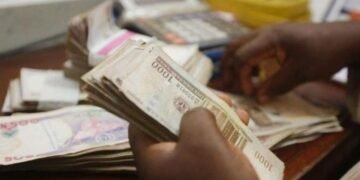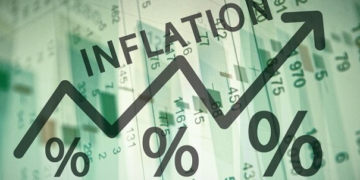Monday was fairly slow, with the dollar generally stronger than its major rivals. The EU Commission announced on Sunday, its intention to open a legal case against the German´s Constitutional Court ruling on ECB’s easing programs. This made the EURUSD to fall towards 1.0800.
The GBP/USD pair fell sub-1.2300. The USD/JPY pair added over 100 pips fed by mounting hopes surrounding economic re-openings, and resurgent dollar demand. Gold settled below $1700 a troy ounce. Crude oil started strong but failed to retain gains despite Saudi Arabia’s statement of its intention to take an additional voluntary cut of 1 million barrels per day in June.
US benchmarks were mixed as nations scrambled to get their businesses back to work. However, Wall Street’s investors contemplated the hurdles in the face of restarting the economy, knowing it would be a pretty long process. As a result, the Dow Jones Industrial Average lost 109 points or 0.4% to end near 24,222, and the S&P 500 managed a small gain to end near 2,930. This was highly influenced by tech stock rallies. The NASDAQ composite climbed 71 points or 0.8%, finishing near 9,192.
Tuesday saw a low risk appetite amid concerns of a second coronavirus wave. News indicated at least six new cases of coronavirus in Wuhan, China where the pandemic started. The Pound came under selling pressure as the market tried to make sense of UK Prime Minister Johnson’s plan to bring the United Kingdom out of the lockdown.
The Dow Jones Industrial Average fell 457.21 points, or 1.89%, to close at 23,764.78. This was its biggest one-day percentage drop since May 1. The S&P 500 index dropped 60.20 points, or 2.05%, to end at 2,870.12. The Nasdaq Composite index fell 189.79 points, or 2.06%, to finish at 9,002.55, ending its six-day winning streak.
The dollar was under pressure against its rivals on Wednesday but ended with gains as US Federal Reserve’s Chief Powell dismissed the chances of taking Fed’s rate below zero. GBPUSD eased and settled around 1.2200. USDJPY was strong due to recovering dollar demand. Crude oil prices didn’t move much even as OPEC reduced its 2020 demand forecasts by 2.23 million barrels per day. Gold recovered its bullish stance, closing the day around $1,715 a troy ounce.
US benchmarks closed markedly lower as investors took heed of Fed’s warnings about the post-COVID-19 global economy. “The scope and speed of this downturn are without modern precedent, significantly worse than any recession since World War II” – Powell said during a webcast discussion with the Peterson Institute for International Economics.
The Dow Jones Industrial average lost 516.67 points, or 2.2%, to end at 23,247.97, while the S&P 500 index retreated 50.12 points, or 1.8%, ending at 2,820. The NASDAQ composite shed 139.38 points, or 1.6% to end at 8.863.17.
On Thursday, the US dollar was very strong against its major rivals after US President Trump stated his support for Powell’s unwillingness to use negative interest rate. Trump said “Right now having a strong dollar is a great thing.” The Euro and the Pound, both weakened against the US dollar simply because of increased dollar demand.
Crude oil prices edged higher, WTI settled around $28.00 a barrel. Gold soared with spot settling above $1,730 a troy ounce. Its demand was due to the risk-off sentiment of the market for the first half of the day.
Shares of financial companies such as American Express, JPMorgan & Chase Co. lifted the DJIA up 377 points, or 1.6% to close near 23,625, the S&P 500 index put on 33 points, or 1.2%, to end the session at 2,852 while the Nasdaq Composite index advanced 81 points, or 0.9% to close around 8,944.
On Friday, the US dollar witnessed some aggressive selling pressure following the release of worse-than-expected US monthly Retail Sales figures. EURUSD ended the week in the red near the 1.0800 figure. Gold hit fresh multi-year highs rallying over 1% as more investors ran to it as a safe haven. The metal moved 3% higher overall last week making it the best week in the last three weeks, smashing through the November 2012 ceiling of $1740 to settle around $1751.80.
In other news, analysts at MUFG bank see the EURCHF breaking below 1.0500. They look to short the pair with a target at 1.0350 and a stop loss at 1.0670. They also see the USD continuing its near term upward advance against its major rivals, especially if risk assets remain unfavorable. They see the USDJPY propped for the downside and look to a target at 104.00 with a stop loss at 109.00.
Analysts at Danske Bank see the future stabilization of oil prices as economy gradually reopens. They forecast an average price of $35 per barrel this year for Brent and $44 per barrel next year. They also see the USDCAD trading lower in the coming months even as the price is currently fluctuating around the 1.40 level as a stronger dollar temporarily wrestles the impact of higher oil prices.
Written by;
Nnadi Victor
An Independent Economics Researcher
Disclaimer: Any person accessing this information and considering potential investment opportunities featured here should make their own commercial assessment of an investment opportunity after seeking the advice of an appropriately authorized or regulated financial advisor. This information should not be construed as advice or a personal recommendation to any prospective investor.























































